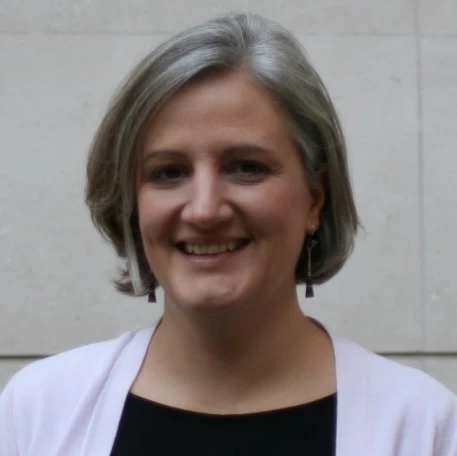 In most low and middle-income countries, incomes of poor households, even with transfers and subsidies, are lower after they pay taxes. Photo: Antonio Bastino/World Bank
In most low and middle-income countries, incomes of poor households, even with transfers and subsidies, are lower after they pay taxes. Photo: Antonio Bastino/World Bank
This is the fifth blog in a series about how countries can correct course and make progress in global poverty reduction. For more information on the topic, read the 2022 Poverty and Shared Prosperity Report.
Most countries, as they emerge from the COVID-19 crisis, are seeking economic growth from weakened fiscal positions. As health and social spending surged to help workers, families, and businesses cope, the economic shock greatly reduced revenues. A full recovery from the pandemic will require not just a revenue restart, but increased revenues to address learning losses and meet development objectives. This higher revenue must be achieved without imposing a heavier burden on the poor and without hurting growth prospects.
As a general rule, fiscal policy—the decisions that governments make on revenue raising and spending through taxes, cash transfers, and subsidies—can reduce income inequality when funds are used to finance social security, health, education, and other investments for growth. However, not all countries raise the same level of tax revenue, and therefore not all countries have the same amount to spend. Likewise, not all fiscal policies impact vulnerable household incomes in the same way.
The Poor are Left Poorer
We analyze how fiscal policy impacts households across income distribution, region, and income levels in chapter 5 of the 2022 Poverty and Shared Prosperity report. We find that while high-income countries ensure their fiscal policies have a positive impact on poor households, in two-thirds of low and middle-income countries, incomes of poor households are lower by the time they pay taxes and receive transfers and subsidies. In other words, these households are left with less money in their pocket than what they made from work and investments (which we call market income).
The conclusion is striking, in most low and middle-income countries, poor households are made poorer by fiscal policy! (Our findings are built on a unique dataset of 94 studies by the Commitment to Equity Institute, OECD, the World Bank, and others).
The poorest households have 60 percent more consumable income (what they have to spend and save after taxes, transfers and subsidies) than market income in high-income countries (figure 1). But in lower-income countries, consumable income is below their market income, and only just above in lower middle-income countries. This means that, in cash terms, the poorest households in the world, which are in most need of support, are net contributors to the government purse rather than net beneficiaries.
Figure 1

How then do richer countries manage to collect more revenue (as a share of GDP) without leaving poorer households worse off?
Part of the answer lies in the mix of fiscal instruments they use. Richer countries rely heavily on direct income taxes, which place a greater burden on richer households, and support poorer households via well-targeted transfers. On the contrary, most non-OECD countries collect taxes predominantly via indirect taxes on consumption—such as value-added tax (VAT) and goods and services tax (GST)—which are a burden on everyone and, in many cases, public transfers are not enough to compensate the poorest.
Subsidies vs. Direct Transfers
Moreover, in many non-OECD countries, subsidies take up much more fiscal space than direct transfers, even though subsidies are poorly targeted. Across income categories, countries spend on average 2.5 to 3 percent of GDP on energy and agricultural subsidies. In contrast, low-income and lower-middle-income countries spend only 1 and 4 percent, respectively, on social protection before pensions. On average, only about 20 percent of total spending on subsidies goes to the bottom 40 percent of households, compared to about 60 percent of spending on cash transfers (figure 2).
Figure 2

Similarly, many countries make wide use of VAT exemptions or lower rates on food and other staples to reduce the tax burden on poorer households. While these items often make up a greater share of their consumption basket, richer households also consume these items and in greater amounts. Consequently, a greater amount of these tax expenditures goes to richer households.
Achieving pro-poor fiscal policy is possible at all income-levels. It requires investments in tax administrative capacity and a reorientation of indirect tax exemptions toward direct transfers. Directly raising more revenues in a progressive manner can be achieved by expanding the personal income tax base, lowering taxable thresholds, and increasing tax rates for higher brackets.
For most developing countries, the formalization of employment (and the ability to collect income taxes withheld from workers by employers), and the capacity of tax authorities to monitor and enforce compliance will take years. That’s why these initiatives should start now and, in the short term, be complemented by other strategies. In these cases, raising revenues without lowering the incomes of poor households requires greater collection through indirect taxes with a reallocation of subsidy spending and tax expenditures to targeted transfers.
Some Fiscal Systems Fare Better Than Others
At every income level, countries can still generate significant revenue collection while minimizing the impact on the poorest households (figure 3). Uruguay and Bolivia are examples of upper-middle income and lower-middle income countries where indirect taxation provides important revenues, with households across the income distribution paying between 10 and 20 percent of their market income. But the poorest 10 percent of households (“decile 1” in the chart) are considerably better off because they receive generous income support, and the second poorest 10 percent of households (decile 2) receive enough support to offset the indirect tax burden. As a low-income country, Ethiopia shows that targeted transfers are an important tool to ensure that indirect taxation at least does not impoverish the poorest further.
Figure 3

These examples show that a combination of non-progressive taxation with generous well-targeted transfers can be effective in both fiscal and equity terms. Improvements in data, technology, and administrative capacity could allow a more accurate targeting of fiscal policy and help address the political difficulties of reforms. Targeted transfer could credibly compensate for the removal of subsidies (such as on fuel, electricity, food) for poor households, and income and property taxes could be expanded and focused on the truly wealthy. These tools provide the hope that today’s low-income countries could accomplish through fiscal policy the degree of inequality and poverty reduction that today’s rich economies took decades to achieve.
This is the fifth blog in a series about how countries can correct course and make progress in global poverty reduction. For more information on the topic, read the 2022 Poverty and Shared Prosperity Report.





Join the Conversation